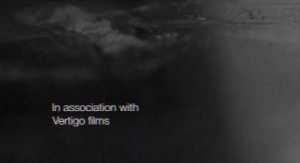Everything is now done the sequence is all made and evaluated and if you’ve been reading this blog then you must have been thinking ‘So where’s this opening title sequence you been braggin’ about?’ Well Here it is:
Evaluation Questions – 7
Looking back to your preliminary task, what do you feel that you have learnt in the progression from it to the full product?
Our preliminary task was the first time that all three of us worked together filming and directing everything together and since then we have a come a long way in terms of team work and creativity. We have improved a lot from our preliminary task to our final production and we have used far more creative thinking as well as practical processes to make it as good as we can. Our preliminary task had bad lighting, was filmed on a poor quality camera and had very basic angles and post production techniques incorporated into.
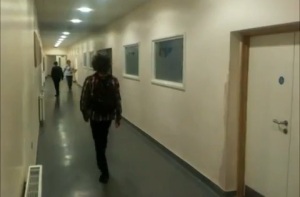 None of these flaws are seen within our final product. The final product contains lighting that suited the situation, not too bright, not too dark and the shots that we gathered that were too dark were cut from the final piece showing that as well as taking more consideration in the filming to begin with, we were also a lot more critical of what shots would be let in to our final product.
None of these flaws are seen within our final product. The final product contains lighting that suited the situation, not too bright, not too dark and the shots that we gathered that were too dark were cut from the final piece showing that as well as taking more consideration in the filming to begin with, we were also a lot more critical of what shots would be let in to our final product.
The quality of the camera that we used was also far superior as we filmed our preliminary task on a camera phone which wasn’t the best thing to film it on. For our final product we used a DSLR camera because of its advanced quality capture and its ability to use focusing effects. This shows not only more consideration about what we were filming on but also an improvement in the planning of production and organisation skills.
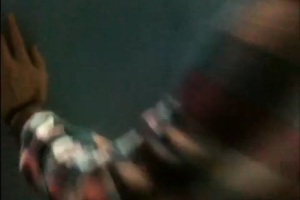 With our final product we were also far more experimental with interesting camera angles because we wanted our sequence to engage the audience and a good way to do this is to use interesting camera angles, we decided that we would try and use as broader range as we could whereas in the preliminary task we used only the most basic angles in order to simply capture the events without putting any real thought into it. We also did a lot more with the shots in terms of post-production techniques using lots of different video effects, transitional effects to create impressions on the audience as well as using titles to incorporate a distinctive visual style. Our final product took advantage of the huge range of features that final cut pro has to offer whilst our preliminary task was quickly put together in windows movie maker.
With our final product we were also far more experimental with interesting camera angles because we wanted our sequence to engage the audience and a good way to do this is to use interesting camera angles, we decided that we would try and use as broader range as we could whereas in the preliminary task we used only the most basic angles in order to simply capture the events without putting any real thought into it. We also did a lot more with the shots in terms of post-production techniques using lots of different video effects, transitional effects to create impressions on the audience as well as using titles to incorporate a distinctive visual style. Our final product took advantage of the huge range of features that final cut pro has to offer whilst our preliminary task was quickly put together in windows movie maker.
I think that we also managed to incorporate a much better narrative that hooks the audience and makes them want to view the rest of the film (if there was one). This is probably because our opening sequence is much longer than our preliminary task however it is still a valid progression.
I feel that we have all learnt a great deal about the ways that an opening sequence is made as well as an awful lot about filming and camera angles, Post production techniques that can be used in order to improve the sequence and the shear amount of planning and pre-production that goes into the creation of an opening sequence.
Evaluation Questions – 6
We have answered this question in the form of a video responce displayed below:
What have you learnt about technologies from the process of constructing the product?
In this question we talked about how used technologies to help us in the aid of our production.
We used the internet a lot during all the stages of production including planning where we used google maps to scout locations and researching titles sequences already in existance and in post production where we used the internet and sites such as youtube to get instant feedback.
During the production we also learnt about how to use programmes like final cut as well as learning about cameras and borrowing a DSLR camera for its advanced focus effects.
Evaluation question – 5
How did you attract/address your audience?
Audience feedback is an important part of any kind of project because something that is great from your point of view may turn out to be a bad idea, a second opinion is vital. We decided that in our media production we would gather a range of opinions from various individuals to gain a wide spectrum of opinions in order to make our media product the best that it could be.
The first opinion that we started with was our teachers. Throughout the production process we continually showed our work to teachers in order to get comments and guidance as to what we could do to improve it. Due to our teachers feedback we made quite a lot of changes to our media product including cutting shots such as the cereal shot and the shot of the character walking from across the road. Our teacher’s feedback also played an important part in the development in narrative. He suggested that the ending of our sequence was too final. If the audience knows what happens to the character in the end then what motivation do they have to watch the rest of the film? This was an extremely valid point that we had not really thought about and because of it we changed the death scene into a thought by the character before he does it, showing him afterwards going back and hesitating. This just goes to prove the importance of audience feedback.
The next people that we got feedback from where our classmates, an important group of people to get feedback from as they are more than just media consumers, they are also students studying media and would critically analyse. We started by showing some people and asking what they thought of the product. We collected some quotes from classmates. Someone said ‘Its trippy, you used all those shaky effects that make the shots shake that kind of, is good. It puts you in the mind-set of the character.’ While somebody else said ‘That’s really effective. I genuinely felt for the character and didn’t want him to be doing the drugs. Especially the part where he was injecting himself with the needle that cringed me out, I could hardly watch. The ending was good also.’
This tells us that on a qualitative level, we had positive results and got some good feedback that told us where our strengths were. However it is also important to take into account what a larger number of people might think so we asked twenty people to watch our opening sequence and answer two questions. The results below.
These results show that although a clear genre wasn’t always present for a lot of the audience the large majority said that they would like to continue watching which shows that the narrative style works to help hook people.
Evaluation Questions – 4
Who would be the audience for your media product?
The target audience of any media product is largely based on the content of the film, especially the aspect of genre. This is because different social stereotypes are attracted to different genres of film for example romantic comedies would appeal to the stereotypical female, possibly in her early 20’s+ and Action thrillers appeal to stereotypical male of almost any age (despite the 12 and 15 age certifications often given to these films for the level of violence). For this reason it is important that before we can suggest a target audience, we can identify a genre for our film to fall into. Despite us only having an opening sequence we can identify that if the film were to be continued on it would probably become a kind of dark drama indie film. From this we can then begin to identify a target audience.
To begin with it is important to consider the age certification that would most likely be given to our film by the BBFC and other film classification boards around the world. From our opening sequence we can see that there are already some adult themes present including drug abuse and suicide. According to the official BBFC guidelines for 2009 “No work taken as a whole may promote the misuse of drugs and any detailed portrayal of drug misuse likely to promote or glamorise the activity may be cut. Works which show drug misuse while emphasising the dangers may receive less restrictive classifications than works that present drug misuse in a neutral manner.”

Considering that our opening sequence depicts the drug user as a man who is extremely unhappy and at the end of 2 minutes takes his own life I would say that we are not glamourizing drug use so on this issue we may escape the boundaries of the 18 classification. The Suicide theme in the sequence however means that we could not but classified with a 12 or below because, according the BBFC website for a 12/12A certificate: “Dangerous behaviour (for example, hanging, suicide and self-harming) should not dwell on detail which could be copied, or appear pain or harm free. Easily accessible weapons should not be glamorised.”
 This means that our classification would most likely land us with a 15 certificate which is quite a typical certificate for a dark indie drama film, this means that our target audience would start at 15 however this kind of genre is generally more appealing stereotypically to adults in their 20’s to 40’s. This may be because they usually have elements that require more thought on the audience’s part as well as usually having characters that are usually glamourized versions of everyday people of the same age as the audience that this audience can relate to.
This means that our classification would most likely land us with a 15 certificate which is quite a typical certificate for a dark indie drama film, this means that our target audience would start at 15 however this kind of genre is generally more appealing stereotypically to adults in their 20’s to 40’s. This may be because they usually have elements that require more thought on the audience’s part as well as usually having characters that are usually glamourized versions of everyday people of the same age as the audience that this audience can relate to.
A similar kind of dark drama, ITV’s TV series ‘Whitechapel’ has on the ITV website a target audience of middle class females. This could also be true to our film because of the complexity of storylines that could form from our opening sequence that are typical of the genre. Stereotypically middle class people like to think more about what they watch whereas working class people just want to watch. I would however not agree that our film would be targeted at just women but at both sexes because there is nothing that suggests women are more interested in this kind of film than men.
Evaluation Questions – 3
What kind of media institution might distribute your media product and why?
The media production that we have created an opening title sequence for is a small, low budget, independent British film. This narrows down the options for distributes quite considerably because now we know that we would never get backing from any major Hollywood distributer such as Paramount, Warner bros, Columbia, Disney, Universal or 20th Century Fox that is more concerned with huge budget blockbusters. None of these ‘Big Six’ film distributers would ever consider distributing a film like ours; however some of these companies do have horizontally integrated art-house distribution companies that are involved with production and distribution of smaller independent films.
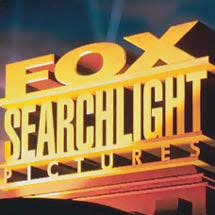 From all of these the company that would be most likely to back our film would be Fox Search Light, the 20th Century Fox Company. This is because unlike Paramount Vantage, Sony Pictures Classics and Focus Feature (the companies set up for independent films by Paramount, Sony and Universal), Fox Searchlight specializes in independent British films and has been involved in many successful British films such as The Full Monty, Shooting Fish, 28 Days later, Millions, The Last King Of Scotland, 28 Weeks Later, Slumdog Millionaire and 127 Hours. Because of this I think that Fox Searchlight would be one of the companies that would be most likely to distribute our Product.
From all of these the company that would be most likely to back our film would be Fox Search Light, the 20th Century Fox Company. This is because unlike Paramount Vantage, Sony Pictures Classics and Focus Feature (the companies set up for independent films by Paramount, Sony and Universal), Fox Searchlight specializes in independent British films and has been involved in many successful British films such as The Full Monty, Shooting Fish, 28 Days later, Millions, The Last King Of Scotland, 28 Weeks Later, Slumdog Millionaire and 127 Hours. Because of this I think that Fox Searchlight would be one of the companies that would be most likely to distribute our Product.
As well as Fox searchlight there are some companies that are more local that could also be a good choice to help us in production and distribution of our film. This company would work alongside fox searchlight. Because our film is an independently made British film there are only really three choices for this job:
- Film 4 – Film 4 is a channel 4 owned company that has been behind a large number of independently made films in the UK such as Shaun of the Dead, Attack the Block, Submarine, This is England, 127 Hours and Slumdog Millionaire. Film 4 has produced many films that have also involved fox searchlight.
- DNA Films – DNA films is a smaller company that has not backed as many films as film 4 however the some of the releases are very credible, including 28 days later directed by award winning director Danny Boyle.
- Vertigo Films – Vertigo films was set up in order to distribute the films Football Factory and It’s all Gone Pete Tong. It is the film company behind monsters and other films.
Taking all of this into account I think that the best company for us here would be Vertigo Films. As much as Film 4 has had some extremely credible Independent film releases, recently they have moved more into the larger budgeted side of the independent industry, which is a bracket that our film doesn’t really fit into. DNA films have had some good releases however Vertigo films have had credible releases and some that have more gritty content such as ours including monsters which was a huge success and had a similar type of budget as ours would have if made into a feature length film. For these reasons I think that Vertigo films would be most appropriate to back our film.
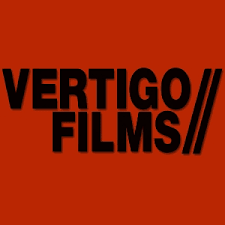
Evaluation questions – 2
How does your media product represent particular social groups?
All media products represent some kind of social group excluding wildlife programs. This is because most media products have storylines based around representations of real life social groups ranging from anything between typical teenagers to the elderly. Media producers must be careful when representing certain social groups, making sure that the way that act in the media text is accurate to how they would behave in real life. If this is not done then the media product would not be taken seriously.
Because our opening sequence only really follows one man through the last day of his life we are only really representing one social group. The character is in his early/mid-twenties and is a heterosexual male. This is a fairly wide social group, but from his clothes, attitude or behaviour we cannot really narrow down any other interests due to the fact that he is in a state of extreme depression and therefore doesn’t really care about anything. We know that he is heterosexual due to the focus on his ex- girlfriend being identified as the source of this extreme depression. In some ways his reliance on drugs could put him into the social group of drug addict.
The way he is represented as a drug addict is reasonably stereotypical, in more of a realistic way. By this I mean that he falls into the more realistic drug addict stereotype rather than the more glamorous one that is also shown in the media in programmes such as Skins. This will most probably help us to get a less restrictive age classification from the BBFC because we make the drug addicts life extremely miserable and in no way glamorize it. From simply watching the sequence it is probable that the character started using drugs because of his ex-girlfriend, however we do not know this for sure, but either way the audience associates drug use with unhappiness. This is evident in many aspects of the characters everyday life.

A more realistic drug user stereotype. A herion addict injecting with her arm on a crate in a back room somewhere.

Glamourized Drug addict stereotype shown in TV shows such as skins.
He wakes up on his own looking considerably rough then walks through his house which is trashed with wrappers, cans and general waste littering the floors. The first thing he does when he wakes up is have a cigarette and start taking drugs, then as soon as he leaves his house he walks to a very grim looking area and visits his drug dealer. Originally he would have been shown shown trying to steal from a shop showing that he has very little money and the money he spends goes on drugs. As he injects heroin he becomes unconscious and is then kicked out. He ends the day by killing himself in probably one of the slowest ways possible. His live is very miserable and in some ways pathetic, emphasising his depression. This is a very stereotypical representation of a drug addict and in some ways reasonably realistic. In the US 25% of all suicides are committed by Drug abusers and people with alcohol issues, and in the UK the suicide rate is significantly higher for drug addicts. This proves that our representation is both accurate to real life and the stereotype.
Evaluation Questions – 1
This is where all the planning and production side of it ends, The sequence is made and all the planning is documented, posted online and done. This means that from here on in its time to start evaluating the media product. There are seven questions that i will be posting, the first of which is this one. I hope its all good and you enjoy it!
In what ways does your media product use, develop or challenge forms and conventions of real media products?
There are many conventions of real opening sequences in our work, but we have also left some out, not because we forgot, but for a reason. But before we can identify these we must first identify why films have opening sequences and what the purposes of these conventions are.
There are many reasons why a film would have an opening sequence at the start of it; in fact it is actually quite a crucial part of most films as it can tell the audience quite a lot about the film. It gives an early look into narrative giving the audience a kind of idea about where the storyline might go as well as displaying an early idea of characterisation and genre. This can give the audience a good idea of whether this film is going to one that they are going to want to watch, making it very important to get the opening sequence of a film right. It also says a lot about the possible setting of the plot; the visual style that will be present throughout the film and even sometimes the ideology that is present, protagonists and antagonists are often identified in the opening sequences of some genres such as action.
I believe that we have kept to some of these conventions in the creation of our opening sequence however some of them we have challenged. To start with we haven’t really kept to the convention that the opening sequence shows the chronological starting point of the narrative, although it is questionable whether this is actually a convention because although most films do this, there is also a large amount of films that don’t. Our opening sequence begins at the chronological end of the narrative showing the characters supposed final day (although it may not be). It does show some narrative and hooks the audience’s interest by not revealing too much about the characterisation. They want to know who this guy is and why he is so depressed, what has happened to him that has put him in this position and is it really that bad. The opening hints at this but it doesn’t make anything clear. This leaves the ideology to be discovered along with the story behind the character; are we wanting him to die or are we on the edge of our seat hoping he decides not to? The Film ‘Pulp Fiction’ directed and co-written by Quinten Tarintino also uses this idea of a non-linear storyline. Pulp Fiction has many elements of this, displaying different parts of the film at different times but similar to our opening sequence in the way that it starts mid-way through the storyline, and not at the start.

The begging of puple fiction is set just before the start of the robbery in the dinner that is chronologically about mid way through the story.
The Start of our film is set just as the character wakes up sometime after his girlfriend has left him, towards the end of the chronological story line.
A convention of the opening sequence that we have conformed to is that the setting has been established in the opening sequence. It is easy to see where the rest of the film would be set from our opening, the transition slowly between the house being clean and tidy to the total mess that it is in at the end. We can also see that the house is in a large village/small town from the shots that have been shown throughout his day giving quite a clear idea of the location that the storyline takes place in. This is important information for the audience to know, as without it there is no kind of bearing and elements of the story can become confusing.
A good opening sequence will also normally show a good representation of the visual style of the film. I feel that our opening sequence has established this well, showing the audience that the films themes are slightly macabre and that the visual style of the film is reflecting that in the use of the effects put onto the camera and the titles. Another film that similarly does this is one I have already written an analysis on, the opening titles of ‘Se7en’. The whole visual style is representative of the themes in the film and they are all displayed extremely well within the title sequence.
720.jpg)
The title sequence of se7en gives a good representation of the visual style that will be present throughout the film through the use of titles, the shots and the clour filter applied to the clip.
Our opening sequence shows the visual style that will continue throughout using titles and camera effects to reflect the themes in the storyline.
Taking all of this into account I feel that our film has both developed and conformed to conventions of an opening sequence, Conforming to the conventions of establishing a clear setting and visual style that will be consistent throughout the film and not conforming the rules of a chronological narrative, rather building on the ideas of a non-chronological narrative in films such as Pulp Fiction. We have also broken a few by not establishing any ideology or much of a characterisation, however I feel that this is to keep the audience interested, not giving to much away to make them want to see more.
The Premiere
Well now we have officially finished and handed in our opening sequence on DVD ready for marking. We are pretty confident that its alright and we are hoping to get a half decent mark out of it.
This will be the last post of my research and planning blog but don’t go anywhere because very soon the space above will be filled with my evaluation questions as a begin my evaluation blog!
Burning the disk
Everything is now finished in the production element of our film. We just checked that everything was in order and then showed the final version to our teacher just to make sure that it was at the kind of quality that we wanted it to be at. We also showed some of our other classmates to get some feedback on it. We recived positive feedback from both our teacher and classmates so we decided that we were ready to burn the video to a disk ready to hand in.
After Me and sam brieflly went outside to play a small part in one of our friends media projects, we came back in and began burning the disk ready to hand in to our teacher.
We were really pleased until we attempted to play the disk in another computer and realised that it didn’t work. We consulted Micheal, our media technician who said that he would look into the problem. Later today we returned and it turns oput the the disk only doesn’t work if you try and play the file from the disk in quicktime, in a DVD Player or the Computers DVD playing programme it works fine.


